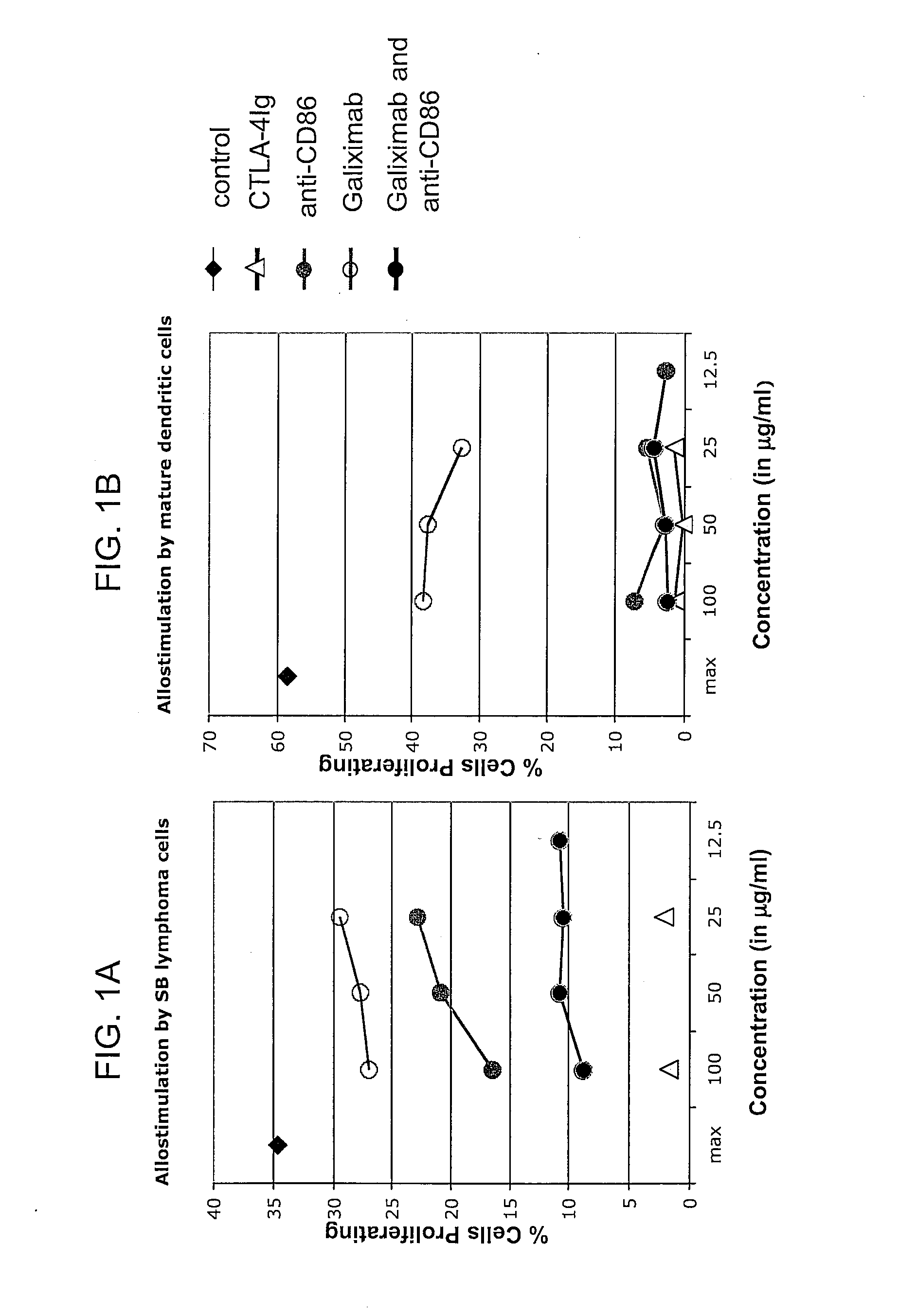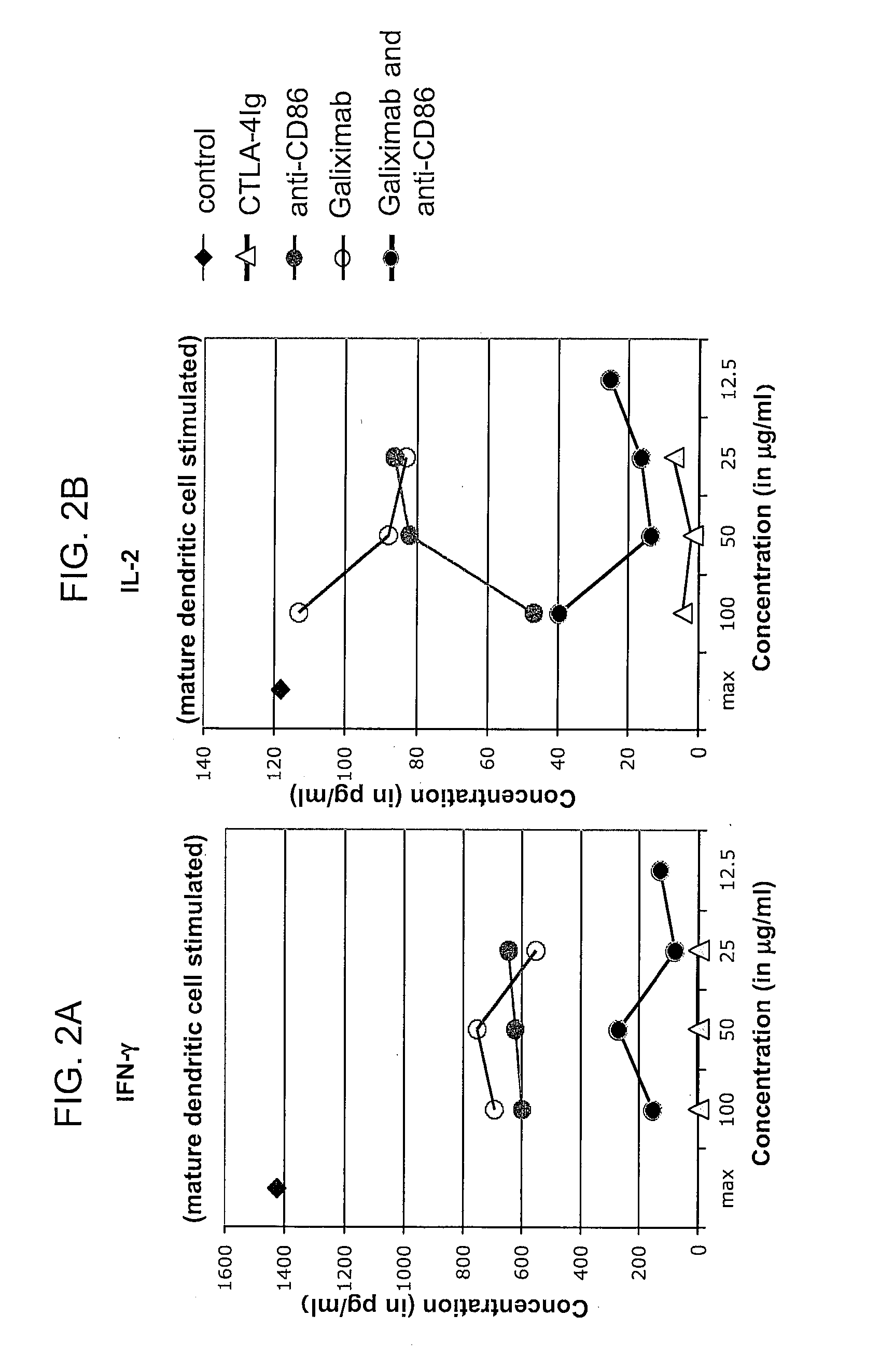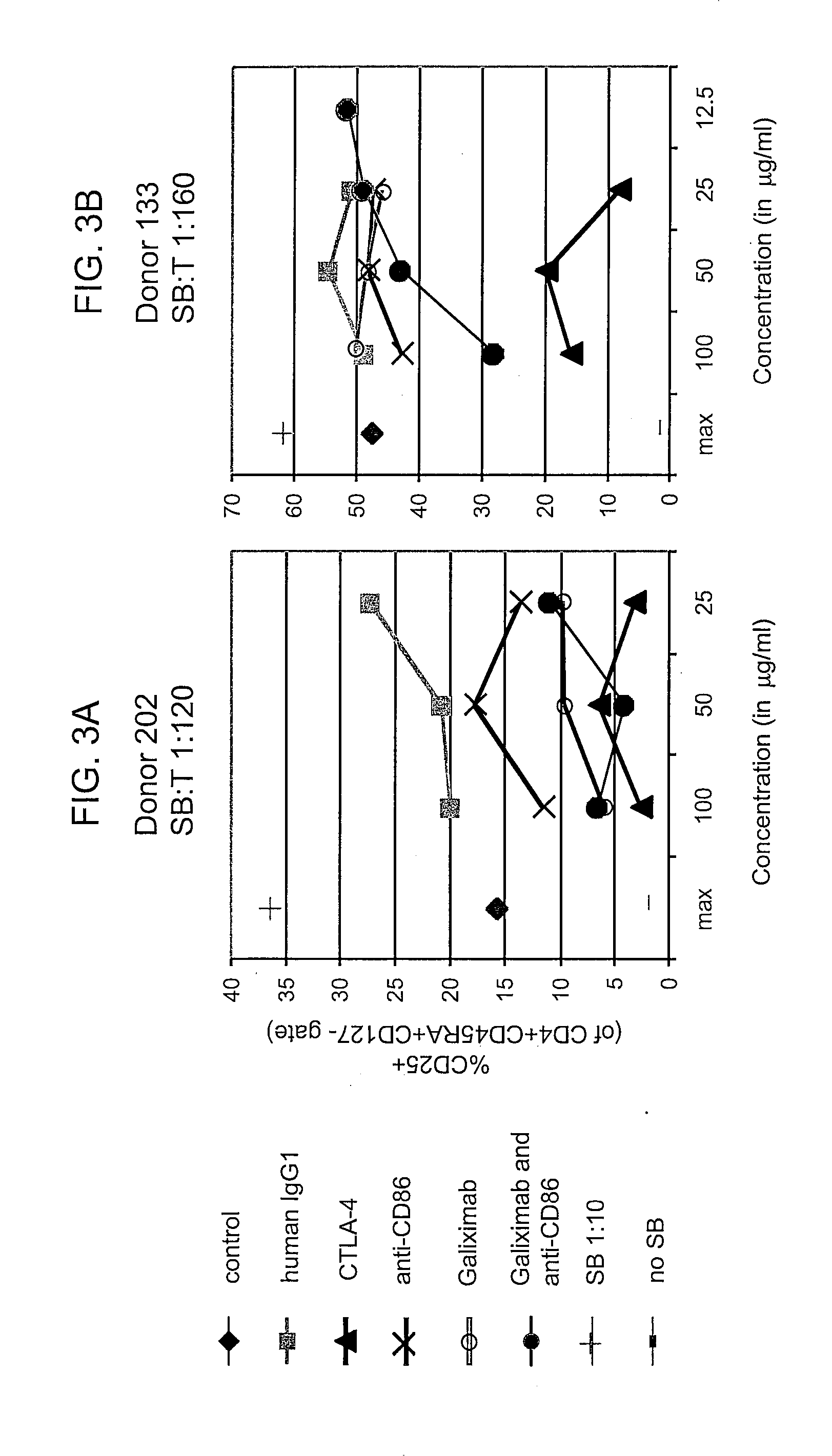Modulation of tumor microenvironment
a tumor microenvironment and tumor technology, applied in the field of tumor therapies, can solve the problems of limited therapeutic strategies targeting this biology, and achieve the effect of suppressing the production of one or more inflammatory cytokines and inhibiting tumor progression
- Summary
- Abstract
- Description
- Claims
- Application Information
AI Technical Summary
Benefits of technology
Problems solved by technology
Method used
Image
Examples
example 1
Galiximab for Treatment of Relapsed or Refractory Hodgkin's Lymphoma
[0093]Adult patients (at least 18 years old) with histologically confirmed classical Hodgkin's lymphoma are selected for treatment with the anti-CD80 antibody, galiximab. Galiximab is an IgG1 lambda, anti-CD80 monoclonal antibody developed using PRIMATIZED® antibody technology to decrease immunogenicity. The variable regions are of cynomologous macaque origin, and the constant regions are of human origin. Galiximab is formulated for intravenous injection as a sterile product in 10 mmol / L sodium citrate, containing 150 mmol / L sodium chloride and 0.02% polysorbate 80 at pH 6.5.
[0094]Patients have a measurable disease (e.g., at least one lesion ≧10 mm) and adequate hematologic, renal and hepatic function. Patients are treated with galiximab for a period of one month. The patients are pre-medicated with 50 mg of diphenhydramine administered by intravenous infusion (IV) using an infusion pump and a 0.22 micron low-protei...
example 2
Pharmacokinetic Analysis of Galiximab
[0097]Serum and / or biopsy samples are obtained before infusion, and within 10 minutes of the completion of infusions (days 1, 8, 15 and 22), prior to galiximab infusion at week eight and thereafter every 12 weeks for as long as the patient remains on the study. Pharmacokinetic analysis analyses include galiximab concentrations in serum, tumor mass, tumor nodules, and / or tumor draining lymph nodes; maximum observed concentration (Cmax); time to maximum observed concentration; half-life; and the area under the concentration time curve (AUC). Data are analyzed using a non-compartmental linear regression method to determine the antibody half-life using data from all samples collected after study day 1 that contain galiximab concentrations exceeding the lower limit of quantitation for the assay (250 ng / mL). AUC is calculated using the linear / logarithmic trapezoidal method and determined with time extrapolated out to infinity.
example 3
Effect of Galiximab on Immune Functions in the Tumor Microenvironment
[0098]In patients receiving galiximab therapy, serum and / or biopsies are obtained at the following time points: prior to treatment on day 1, in week 4 (completion of induction), in week 8, and every 12 weeks thereafter for the duration that the patient remains on study. Biopsies may be obtained from a tumor mass, tumor nodules, and / or tumor draining lymph nodes. Immune cell functions in the samples are assayed according to methods known in the art. Cytokine levels are determined using antibodies that specifically bind to the cytokine(s) of interest. Regulatory T cells, Th2 cells, and macrophages are quantified using flow cytometric analyses using appropriate molecular markers as known in the art and described herein. For analysis of the tumor microenvironment, malignant cells are first depleted from the sample using an antibody that specifically binds a tumor-associated antigen. One skilled in the art can readily i...
PUM
 Login to View More
Login to View More Abstract
Description
Claims
Application Information
 Login to View More
Login to View More - R&D
- Intellectual Property
- Life Sciences
- Materials
- Tech Scout
- Unparalleled Data Quality
- Higher Quality Content
- 60% Fewer Hallucinations
Browse by: Latest US Patents, China's latest patents, Technical Efficacy Thesaurus, Application Domain, Technology Topic, Popular Technical Reports.
© 2025 PatSnap. All rights reserved.Legal|Privacy policy|Modern Slavery Act Transparency Statement|Sitemap|About US| Contact US: help@patsnap.com



